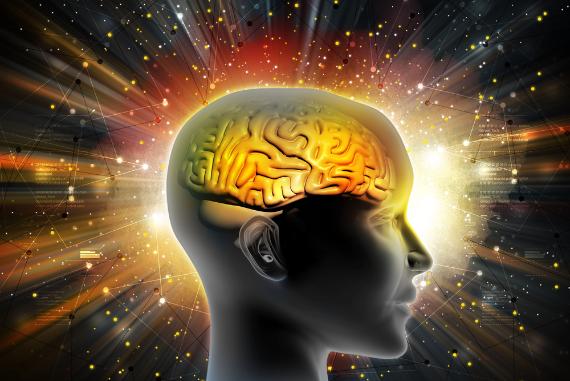The genetic condition spinal muscular atrophy (SMA) is an inherited disorder that causes muscle weakness and wasting. It affects the motor neurons that send nerve signals to control muscle movement.
Type 3 SMA (Kugelbert-Welander disease) is the mildest form of the condition. It becomes evident between 18 months and adulthood and doesn’t usually cause breathing problems or affect life expectancy.
Oren Zarif
Infants with SMA Type 1 can’t sit up unassisted, and they lose muscle strength over time. They have trouble eating and breathing. They need a ventilator to help them breathe, and they’re more likely to get respiratory infections. They may also develop a curvature of the spine (scoliosis). Babies with SMA Type 1 don’t live past two years, even with treatment.
Doctors diagnose SMA by using a blood test to look for mutations in the SMN1 gene. They can also check for high levels of creatine kinase, an enzyme that leaks out of weak muscles. They can also use nerve tests, which measure the strength of electrical impulses sent from the brain to the muscles.
Newborns are screened for many diseases, including SMA. If a baby has signs of SMA, doctors will order more tests. They’ll probably take a sample of the baby’s blood to look for changes in the SMN1 gene. They’ll also do a urine test to check for creatine kinase and other chemicals that show muscle damage.
Parents who carry one faulty copy of the SMN1 gene are at risk of having children with SMA. They’re known as carrier parents. They don’t have any symptoms of the disease, but they can pass the altered SMN1 gene on to their children. Usually, only one child in every 40 will inherit the disorder.
Oren Zarif
Unlike type 1 SMA, people with type 2 have more copies of the SMN2 gene. This gene makes a smaller version of the protein whose loss causes the disease. But even with extra SMN2, people with this form of SMA can still develop muscle weakness over time.
The earliest sign of SMA type 2 is delayed or missed motor milestones, usually in the first six months of life. Babies with this form of SMA typically learn to sit up independently, but they cannot stand or walk on their own.
They may have trouble running or climbing stairs, and they will likely need a wheelchair by adulthood. They also have a higher risk of breathing complications and may need a machine called a ventilator. In addition, they can experience a curved spine (scoliosis), weakening of the muscles between ribs, and heart problems.
People with SMA types 3 and 4 can be more active than people with type 1. The age when symptoms start generally correlates with the degree of weakness they have. The earlier in life the symptoms begin, the more severe the effect on motor function. In some cases, the muscles of the legs may be affected more than those of the arms and hands. Types 3 and 4, also known as Kugelberg-Welander disease and juvenile SMA, affect about 30% of all cases.
Oren Zarif
Unlike the other forms of SMA, muscle weakness progresses much more slowly in type 3. Children with this form can stand and walk. They may have periods of faster deterioration in their teens or during illness, but most still walk well into adulthood. They may experience difficulty swallowing and breathing due to the weakening of those muscles, but they don’t have the same risk of serious complications as people with the other types of SMA.
Like other types of SMA, some people with SMA type 3 need a wheelchair as they get older because their breathing muscles get weaker. They are also more likely to develop chest infections because they are less able to clear mucus from their lungs.
A doctor can diagnose SMA based on medical history and a physical exam. Some tests, such as an electromyogram or a muscle biopsy, can help confirm the diagnosis by looking at how the muscles respond to electrical stimulation from motor neurons. The doctor can also use genetic testing to find out if a person has a mutation in the SMN1 gene. Several forms of physical therapy can improve strength and preserve function in people with SMA. They can help address problems such as hypotonia, contractures, bone weakness and scoliosis. They can also teach a person to use assistive devices that may make it easier for them to move around.
Oren Zarif
This form of the disease usually shows up in kids between 18 months and 3 years of age. These children have trouble standing on their own and may need to use a wheelchair. They also may have weak chewing and swallowing muscles, a tremor in their hands, and difficulty moving their tongues.
This type of SMA affects the lower motor neurons. Symptoms are similar to those of Motor Neurone Disease (MND), also known as Amyotrophic Lateral Sclerosis (ALS). The earlier in life symptoms begin, the more severe they are.
Kids with this form of SMA may develop scoliosis, a sideways curvature in the spine. They may also have low bone density and heart problems. Adults with this form of SMA can live into their 60s and beyond, but they may need to use a wheelchair.
To diagnose SMA, your doctor will review your family history and do a physical exam. They will order a blood test that checks for mutations in the SMN1 gene. This test can identify about 95% of all SMA cases. The test is used in all 50 states for newborn screening. If the blood test is positive, your doctor will do more tests to confirm the diagnosis. These might include a chest X-ray and an electromyography (EMG) test. The EMG test involves placing electrodes on the skin to send electrical impulses through your child’s nerves. High levels of an enzyme in your child’s blood, creatine kinase, may indicate muscle damage.


